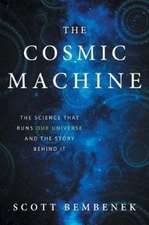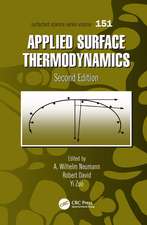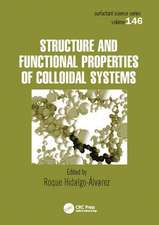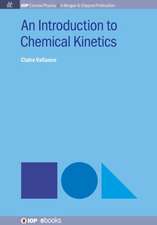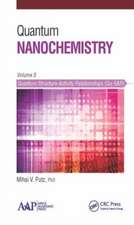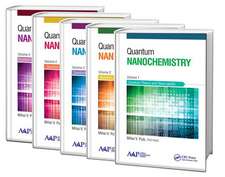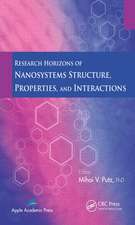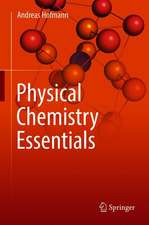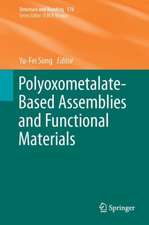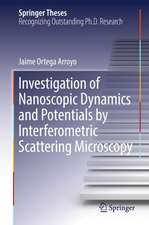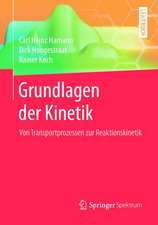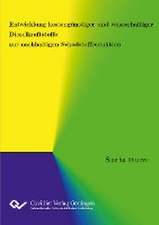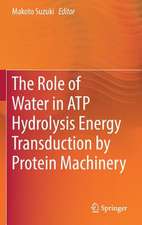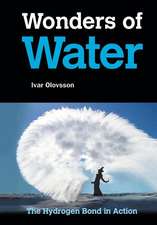Quantum Nanochemistry, Volume Two: Quantum Atoms and Periodicity
Autor Mihai V. Putzen Limba Engleză Hardback – 21 mar 2016
| Toate formatele și edițiile | Preț | Express |
|---|---|---|
| Paperback (1) | 501.63 lei 43-57 zile | |
| Apple Academic Press Inc. – 31 mar 2021 | 501.63 lei 43-57 zile | |
| Hardback (1) | 966.37 lei 43-57 zile | |
| Apple Academic Press Inc. – 21 mar 2016 | 966.37 lei 43-57 zile |
Preț: 966.37 lei
Preț vechi: 1295.50 lei
-25% Nou
Puncte Express: 1450
Preț estimativ în valută:
184.94€ • 192.37$ • 152.68£
184.94€ • 192.37$ • 152.68£
Carte tipărită la comandă
Livrare economică 14-28 aprilie
Preluare comenzi: 021 569.72.76
Specificații
ISBN-13: 9781771881340
ISBN-10: 1771881348
Pagini: 548
Ilustrații: 45 black & white illustrations, 13 colour illustrations
Dimensiuni: 152 x 229 x 38 mm
Greutate: 0.86 kg
Ediția:1
Editura: Apple Academic Press Inc.
Colecția Apple Academic Press
ISBN-10: 1771881348
Pagini: 548
Ilustrații: 45 black & white illustrations, 13 colour illustrations
Dimensiuni: 152 x 229 x 38 mm
Greutate: 0.86 kg
Ediția:1
Editura: Apple Academic Press Inc.
Colecția Apple Academic Press
Public țintă
Academic and PostgraduateCuprins
Preface. Foreword by Aranya B. Bhattacherje, University of Delhi, India. Historical Highlights on the Periodicity of the Chemical Elements. Quantum Assessment for Atomic Stability. Periodicity by Quantum Propagators and Density in Physical Atom. Periodicity by Peripheral Electrons and Density in Chemical Atom. Periodicity by Peripheral Electrons and Density in Chemical Atom. Quantum Algebraic and Stochastic Dynamics for Atomic Systems. Index.
Notă biografică
Mihai V. Putz, PhD is a laureate in physics (1997), with an MS degree in spectroscopy (1999), and PhD degree in chemistry (2002), with many post-doctorate stages: in chemistry (2002-2003) and in physics (2004, 2010, 2011) at the University of Calabria, Italy, and Free University of Berlin, Germany, respectively. He is currently associate professor of theoretical and computational physical chemistry at West University of Timisoara, Romania. He has made valuable contributions in computational, quantum, and physical chemistry through seminal works that appeared in many international journals. He actively promoted a new method of defining electronegativity, DFE (Density Functional Electronegativity), among new enzyme kinetics (Logistic Enzyme Kinetics), a new formalization of the structure-activity relationship (SPECTRAL-SAR) model, and recently the bondonic quasi-particle theory of the chemical bonding first application on nanosystems as graphene, all seeking for a unitary quantum approach of the chemical structure and reactivity targeting the bio-, pharmaco-, and ecological analytical description. He is editor-in-chief of the International Journal of Chemical Modelling and the International Journal of Environmental Sciences. He is member of many professional societies and has received several national and international awards from the Romanian National Authority of Scientific Research (2008), the German Academic Exchange Service DAAD (2000, 2004, 2011), and the Center of International Cooperation of Free University Berlin (2010). He is the leader of the Laboratory of Computational and Structural Physical Chemistry for Nanosciences and QSAR at Biology-Chemistry Department of West University of Timisoara, Romania, where he conducts research in the fundamental and applicative fields of quantum physical-chemistry and QSAR. In 2010 Mihai V. Putz was declared through a national competition the Best Researcher of Romania, while in 2013 he was recognized among the first Dr. Habil. in Chemistry in Romania. In 2013 he was appointed scientific director of the newly founded Laboratory of Structural and Computational Physical Chemistry for Nanosciencs and QSAR in his alma mater of West University of Timisoara, while from 2014, he was recognized by the Romanian Ministry of Research as principal investigator of the first degree, and also becoming full member of the International Academy of Mathematical Chemistry.
Recenzii
"As varied as the interests of landmark entrepreneur and scientist Alfred Nobel, the present book, Quantum Atom and Periodicity by Mihai V. Putz, explores the story of periodicity of chemical elements by incorporating topics spanning from history to topics as complex as the Feynman-Kleinert variational theory, density functional theory, as well as quantum theory of periodicity. The author has very nicely established a connection between the classical views and quantum theory about periodicity of elements. Readers from both physics as well as chemistry can appreciate and comprehend the book, with its clear descriptions and explanations. I recommend the book highly to students of both physics and chemistry who wishes to understand the quantum theory of periodicity of elements."
—Aranya B. Bhattacherjee, School of Physical Sciences, Jawaharlal Nehru University, New Delhi, India (from the Foreword to Volume 2)
—Aranya B. Bhattacherjee, School of Physical Sciences, Jawaharlal Nehru University, New Delhi, India (from the Foreword to Volume 2)
Descriere
Volume 2 of the 5-volume Quantum Nanochemistry presents in a balanced manner the fundamental and advanced concepts, principles, and models as well as their first and novel combinations and applications in quantum (physical) and chemical theory of atomic structure. It exposes the atom’s perspective of quantum structures, spanning its diverse analytical predictions by historical and in-depth quantum analysis of the atomic periodicities of the atomic radii, ionization potential, electron affinity, electronegativity, and chemical hardness, along with the recently consecrated electrophilicity and chemical action—as the main global reactivity indices are assessed when next judging the chemical reactivity through their associate principles.

